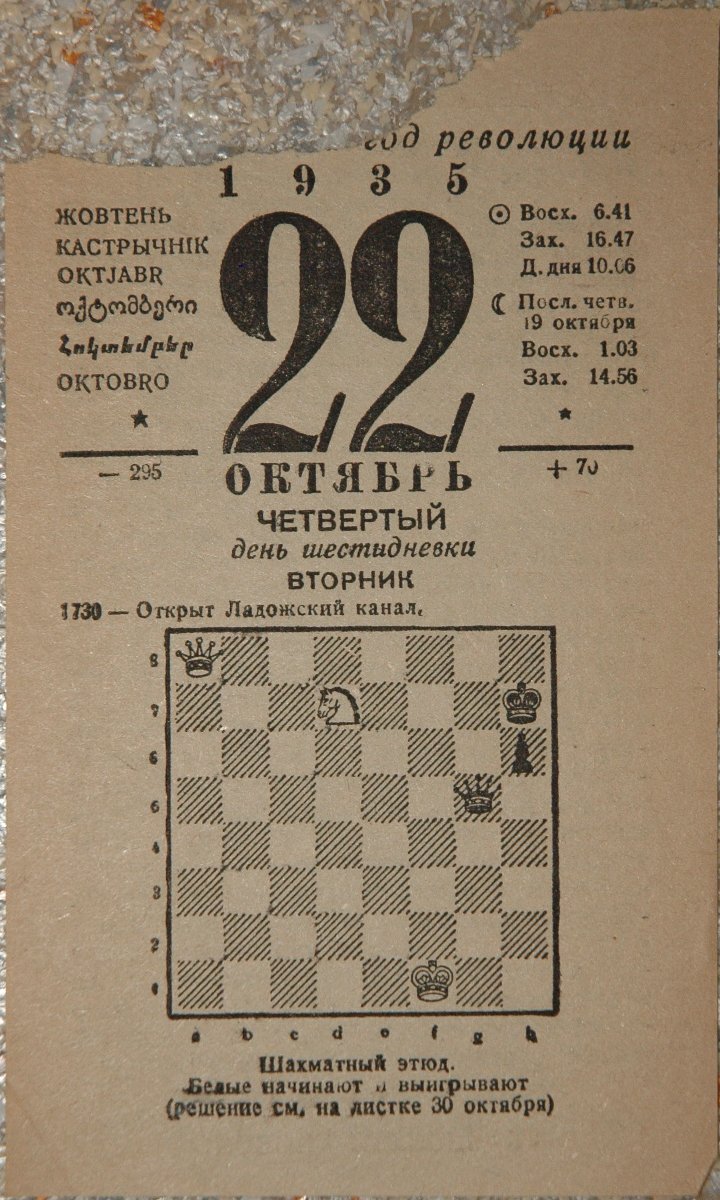|
Burden Of Life
is a 1935 Japanese comedy-drama and shĹŤshimin-eiga film directed by Heinosuke Gosho. Plot Elderly couple ShĹŤzĹŤ and Tamoko have just successfully married away the third and youngest of their daughters, but get into an argument over their son Kanichi, who is still in elementary school. ShĹŤzĹŤ argues that he and Tamoko had Kanichi far too late, and instead of paying for his education another twenty years, he should be taken out of school and sent to work. Tamoko protests his proposition, which infuriates ShĹŤzĹŤ so much that he demands that she leaves the house. Tamoko and Kanichi move into the apartment of daughter Itsuko and her husband. ShĹŤzĹŤ has increasing doubts about his attitude towards Kanichi, and when his son shows up at his former home, he indulges him and feeds him his favourite food. Tamoko, asked to show more understanding for her husband's perspective by her acquaintances and Itsuko, follows their advice and returns to ShĹŤzĹŤ. Cast * Tatsuo SaitĹŤ as ShĹŤzĹ ... [...More Info...] [...Related Items...] OR: [Wikipedia] [Google] [Baidu] |
Heinosuke Gosho
was a Japanese film director and screenwriter who directed Japan's first sound film, '' The Neighbor's Wife and Mine'', in 1931. His films are mostly associated with the shomin-geki (lit. "common people drama") genre. Among his most noted works are ''Where Chimneys Are Seen'', '' An Inn at Osaka'', ''Takekurabe'' and ''Yellow Crow''. Life Gosho was born on January 24, 1902, in Kanda, Tokyo, to merchant Heisuke Gosho and his father's geisha mistress. At the age of five, after Heisuke's eldest son died, Gosho left his mother to be the successor to his father's wholesale business. He studied business at Keio University, graduating in 1923. Through his father's close relation to film director YasujirĹŤ Shimazu, Gosho was able to join the Shochiku film studios and worked as assistant director to Shimazu. In 1925, Gosho debuted as a director with the film ''NantĹŤ no haru''. His films of the 1920s are nowadays regarded as lost. Gosho's first notable success, and Japan's first feat ... [...More Info...] [...Related Items...] OR: [Wikipedia] [Google] [Baidu] |
John Gillett
John Gillett (1925–1995) was a British film critic and researcher whose career at the British Film Institute spanned over 44 years. He was also a programmer for the National Film Theatre on the works of Buster Keaton, early Russian cinema and Japanese cinema, to name a few.John Gillett BFI Collections Access Database. Retrieved 8 October 2016 He wrote film reviews for ''''. With Ian Christie, he edited ''Futurism/Formalism/FEKS: 'Eccentrism' and Soviet Cinema 1918-1936.'' He was also an editor of ''Yasujiro Ozu: A Critical Anthology'', with David W ... [...More Info...] [...Related Items...] OR: [Wikipedia] [Google] [Baidu] |
Films Directed By Heinosuke Gosho
A film also called a movie, motion picture, moving picture, picture, photoplay or (slang) flick is a work of visual art that simulates experiences and otherwise communicates ideas, stories, perceptions, feelings, beauty, or atmosphere through the use of moving images. These images are generally accompanied by sound and, more rarely, other sensory stimulations. The word "cinema", short for cinematography, is often used to refer to filmmaking and the film industry, and to the art form that is the result of it. Recording and transmission of film The moving images of a film are created by photographing actual scenes with a motion-picture camera, by photographing drawings or miniature models using traditional animation techniques, by means of CGI and computer animation, or by a combination of some or all of these techniques, and other visual effects. Before the introduction of digital production, series of still images were recorded on a strip of chemically sensitized ... [...More Info...] [...Related Items...] OR: [Wikipedia] [Google] [Baidu] |
Japanese Comedy Films
Japanese may refer to: * Something from or related to Japan, an island country in East Asia * Japanese language, spoken mainly in Japan * Japanese people, the ethnic group that identifies with Japan through ancestry or culture ** Japanese diaspora, Japanese emigrants and their descendants around the world * Japanese citizens, nationals of Japan under Japanese nationality law ** Foreign-born Japanese, naturalized citizens of Japan * Japanese writing system, consisting of kanji and kana * Japanese cuisine, the food and food culture of Japan See also * List of Japanese people * * Japonica (other) * Japonicum * Japonicus * Japanese studies Japanese studies (Japanese: ) or Japan studies (sometimes Japanology in Europe), is a sub-field of area studies or East Asian studies involved in social sciences and humanities research on Japan. It incorporates fields such as the study of Japanese ... {{disambiguation Language and nationality disambiguation pages ... [...More Info...] [...Related Items...] OR: [Wikipedia] [Google] [Baidu] |
Japanese Drama Films
Japanese may refer to: * Something from or related to Japan, an island country in East Asia * Japanese language, spoken mainly in Japan * Japanese people, the ethnic group that identifies with Japan through ancestry or culture ** Japanese diaspora, Japanese emigrants and their descendants around the world * Japanese citizens, nationals of Japan under Japanese nationality law ** Foreign-born Japanese, naturalized citizens of Japan * Japanese writing system, consisting of kanji and kana * Japanese cuisine, the food and food culture of Japan See also * List of Japanese people * * Japonica (other) * Japonicum * Japonicus * Japanese studies Japanese studies (Japanese: ) or Japan studies (sometimes Japanology in Europe), is a sub-field of area studies or East Asian studies involved in social sciences and humanities research on Japan. It incorporates fields such as the study of Japanese ... {{disambiguation Language and nationality disambiguation pages ... [...More Info...] [...Related Items...] OR: [Wikipedia] [Google] [Baidu] |
1935 Comedy Films
Events January * January 7 – Italian premier Benito Mussolini and French Foreign Minister Pierre Laval conclude Franco-Italian Agreement of 1935, an agreement, in which each power agrees not to oppose the other's colonial claims. * January 12 – Amelia Earhart becomes the first person to successfully complete a solo flight from Hawaii to California, a distance of 2,408 miles. * January 13 – A plebiscite in the Saar (League of Nations), Territory of the Saar Basin shows that 90.3% of those voting wish to join Germany. * January 24 – The first canned beer is sold in Richmond, Virginia, United States, by Gottfried Krueger Brewing Company. February * February 6 – Parker Brothers begins selling the board game Monopoly (game), Monopoly in the United States. * February 13 – Richard Hauptmann is convicted and sentenced to death for the kidnapping and murder of Charles Lindbergh Jr. in the United States. * February 15 – The discovery and clinical development of ... [...More Info...] [...Related Items...] OR: [Wikipedia] [Google] [Baidu] |
1935 Drama Films
Events January * January 7 – Italian premier Benito Mussolini and French Foreign Minister Pierre Laval conclude an agreement, in which each power agrees not to oppose the other's colonial claims. * January 12 – Amelia Earhart becomes the first person to successfully complete a solo flight from Hawaii to California, a distance of 2,408 miles. * January 13 – A plebiscite in the Territory of the Saar Basin shows that 90.3% of those voting wish to join Germany. * January 24 – The first canned beer is sold in Richmond, Virginia, United States, by Gottfried Krueger Brewing Company. February * February 6 – Parker Brothers begins selling the board game Monopoly in the United States. * February 13 – Richard Hauptmann is convicted and sentenced to death for the kidnapping and murder of Charles Lindbergh Jr. in the United States. * February 15 – The discovery and clinical development of Prontosil, the first broadly effective antibiotic, is published in a series ... [...More Info...] [...Related Items...] OR: [Wikipedia] [Google] [Baidu] |
National Film Archive Of Japan
The is an independent administrative institution and one of Japan's seven national museums of art, which specializes in preserving and exhibiting the film heritage of Japan. In its previous incarnation, it was the National Film Center, which was part of the National Museum of Modern Art, Tokyo. In April 2018, it became independent of the National Museum of Modern Art and was officially elevated to the rank of a national museum. The NFAJ is located in KyĹŤbashi, Tokyo, and is Japan's only public institution devoted to cinema, holding about 40,000 films, and numerous other materials, in its collection. The Archive has film-related materials on permanent display; and it holds special screenings in its theaters. The NFAJ is a member of The International Federation of Film Archives. It preserves many important works of Japanese and world film history, including films designated as Important Cultural Properties of Japan like '' Momijigari''. Collection The NFAJ restored a Japanese ani ... [...More Info...] [...Related Items...] OR: [Wikipedia] [Google] [Baidu] |
Japan Society (Manhattan)
Japan Society is a non-profit organization formed in 1907 to promote friendly relations between the United States and Japan. Its headquarters was designed by Junzo Yoshimura and opened in 1971 at 333 East 47th Street near the United Nations. With a focus on promoting "arts and culture, public policy, business, language, and education", the organization has regularly held events in its many facilities, including a library, art gallery, and theater, since its opening. After suspending all activities during World War II, Japan Society expanded under the leadership of John D. Rockefeller III. History Incorporation In 1907, Tamemoto Kuroki and Goro Ijuin were chosen to represent Japan at the Jamestown Exposition. They attended a welcome dinner in New York City with Japanese ambassador to the United States, Shuzo Aoki, where there was talk of forming an organization to promote US-Japan relations in the city. Two days later at a luncheon held by Kuroki, Japan Society was born. Th ... [...More Info...] [...Related Items...] OR: [Wikipedia] [Google] [Baidu] |
British Film Institute
The British Film Institute (BFI) is a film and television charitable organisation which promotes and preserves film-making and television in the United Kingdom. The BFI uses funds provided by the National Lottery to encourage film production, distribution, and education. It is sponsored by the Department for Digital, Culture, Media and Sport, and partially funded under the British Film Institute Act 1949. Purpose It was established in 1933 to encourage the development of the arts of film, television and the moving image throughout the United Kingdom, to promote their use as a record of contemporary life and manners, to promote education about film, television and the moving image generally, and their impact on society, to promote access to and appreciation of the widest possible range of British and world cinema and to establish, care for and develop collections reflecting the moving image history and heritage of the United Kingdom. BFI activities Archive The BFI maint ... [...More Info...] [...Related Items...] OR: [Wikipedia] [Google] [Baidu] |
Berkeley Art Museum And Pacific Film Archive
The Berkeley Art Museum and Pacific Film Archive (BAMPFA, formerly abbreviated as BAM/PFA) are a combined art museum, repertory movie theater, and archive associated with the University of California, Berkeley. Lawrence Rinder was Director from 2008, succeeded by Julie Rodrigues Widholm in August, 2020. The museum is a member of the North American Reciprocal Museums program. Collection Art The University of California art collection began with ''Flight into Egypt'', a 16th-century oil on wood panel by the School of Joachim Patinir gifted to the university by San Francisco banker and financier François Louis Alfred Pioche in 1870. The museum was founded in 1963 after a donation was made to the university from artist and teacher Hans Hofmann of 45 paintings plus $250,000. A competition to design a building was announced in 1964, and the museum, designed by Mario Ciampi, opened in 1970. Founding Director Peter Selz, formerly of the Museum of Modern Art in New York, served fr ... [...More Info...] [...Related Items...] OR: [Wikipedia] [Google] [Baidu] |
Joji Ohara
was a pioneering Japanese cinematographer. Career Born in Tokyo, Ohara joined Shochiku's Kamata Studio in 1924 and was promoted to cinematographer in 1927. He is most known for his work with Heinosuke Gosho, including ''The Dancing Girl of Izu'' (1933), and for the soft tone of his images. He helped establish the modern touch of Shochiku's cinematography at Kamata along with Bunjirō Mizutani and Mitsuo Miura. He later worked at Tokyo Hassei Eiga, Toho, Shintoho, and Daiei Film. He shot films for many of Japan's great directors such as Akira Kurosawa, Yasujirō Ozu, Kenji Mizoguchi, Kōzaburō Yoshimura, Yutaka Abe, Masahiro Makino, Shohei Imamura, Shūe Matsubayashi, and Koji Shima. In 1954, he won the award for best cinematography at the Mainichi Film Awards for his work on ''Ai to shi no tanima'' and ''Niwatori wa futatabi naku''. Selected filmography *''The Dancing Girl of Izu'' (1933) *'' Somniloquy of the Bridegroom'' (Hanamuko no negoto) (1935) *'' A Burden of Life' ... [...More Info...] [...Related Items...] OR: [Wikipedia] [Google] [Baidu] |





